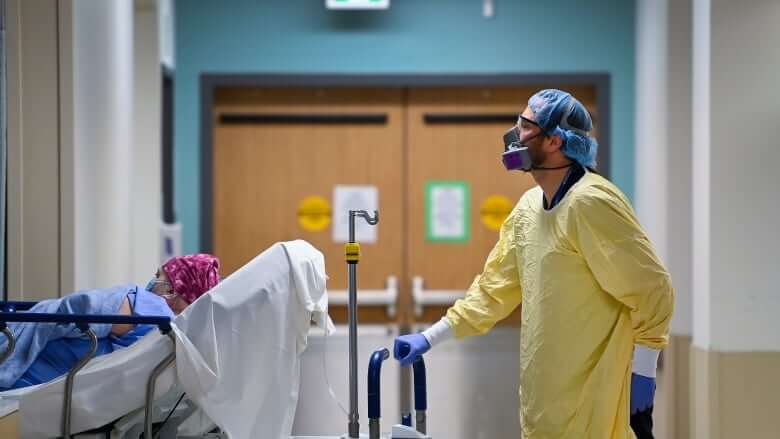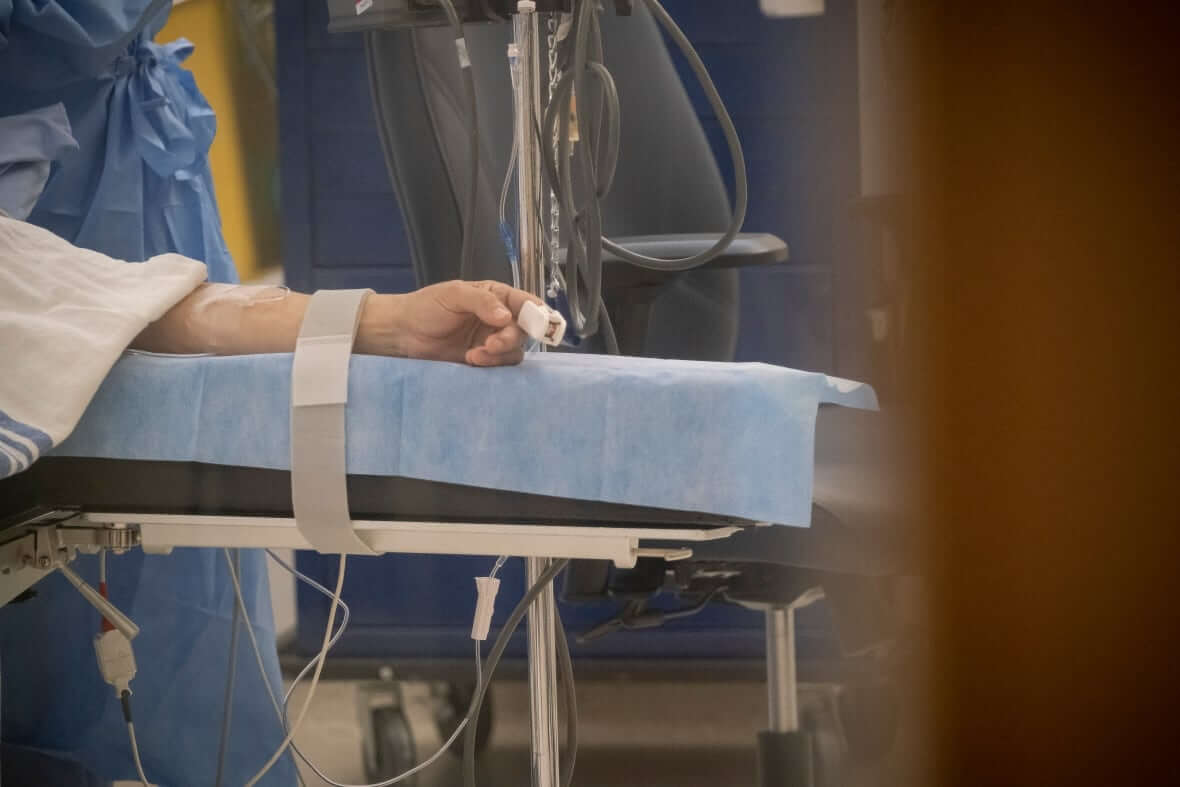Ontario to run hospitals at 115% capacity to clear pandemic surgical backlog

The Ontario government says it wants to boost the operating capacity of the province’s hospital system to up to 115 per cent of pre-COVID-19 levels to address a backlog of surgeries and procedures delayed by the pandemic.
Pandemic has left backlog of almost 16 million medical procedures in Ontario, doctors say
At a media briefing Wednesday, officials said the province will commit $324 million to — among other things — help hospitals perform up to 67,000 more surgeries and offer 135,000 more hours for diagnostic imaging than would have otherwise been possible.
That represents a roughly 10 per cent increase in capacity for the highest-volume surgeries in the province, including orthopaedic and ophthalmologic procedures.
Part of the effort also includes more surgeries on evenings and weekends, officials said.
You can read the briefing presented to media at the bottom of this story.
Twice during the pandemic, Ontario’s chief medical officer of health ordered hospitals to stop non-urgent and non-emergency care to make room for COVID-19 patients. At the peak of the third wave, 900 people with COVID-19 were admitted to intensive care, representing nearly half of all ICU capacity in Ontario.
Despite the directives, however, about 99.3 per cent of all emergency and urgent surgeries and procedures were completed in the province between March 1, 2020 and March 1, 2021, officials said.
It’s expected that capacity for non-urgent and non-emergency procedures will reach roughly 100 per cent of its pre-pandemic level by the fall. Then the province will aim to begin ramping up capacity further over the following months, eventually reaching between 110 and 115 per cent by spring 2022.
Exactly how individual hospitals will be impacted will depend on where they are, as COVID-19 had regional effects on the health-care system.
Demand fell during the pandemic
Somewhat counter-intuitively, officials said, the pandemic did not result in significantly longer surgical and diagnostic wait times because demand also fell. Fewer people saw their family doctors or sought out care in emergency departments.
Officials expect it will take several months for the true number of backlogged procedures to reveal itself, as people increasingly begin seeing their doctors again or seeking care for ailments they may have put off during the pandemic.
“As we continue to safely and gradually lift public health directions, we expect more and more Ontarians to seek the care they need,” Minister of Health Christine Elliott told reporters Wednesday.

“We know some people will come forward that still haven’t been diagnosed yet, but that’s why we are increasing capacity,” Elliott said.
Exactly how long it will take to clear the backlog caused by the pandemic, Elliott says, is unclear.
A breakdown of the $324-million includes:
- $216 million to help hospitals extend operating room hours.
- $35 million to increase diagnostic imaging, particularly MRIs and CT scans.
- $18 million to improve the centralized surgical waitlist management system.
- $24 million to help independent and private facilities to expand capacity to offer some procedures, such as cataract surgery.
One of the remaining unanswered questions is how the new plan would be impacted by another surge in COVID-19 cases.
While Ontario Health CEO Matthew Anderson said the province has prepared for small peaks in infections, it’s unclear how priorities within the health-care system could change if the province saw a fourth wave of the virus.
“Right now COVID is at a manageable level,” he said Wednesday. “We hope that it will stay that way.”
Back-to-school plan will be released early next week, Ford says
This comes as Premier Doug Ford says Ontario’s back-to-school plan will be announced early next week.
Ford shared the news today during a visit to Thunder Bay, Ont., where he met with local leaders to discuss the ongoing wildfires that have forced thousands from their homes.
The premier says the comprehensive back-to-school plan will include making sure schools have proper ventilation.
That was one of the recommendations of the province’s advisory group of science experts, who also called for schools to remain open in all but the most catastrophic scenarios.
Ontario has had the longest interruption to in-person classes in Canada.
The province’s chief medical officer of health has said that he wants a conservative, safe opening of schools and that the plan has a significant amount of prevention factored in.
Meanwhile, Ontario reported 158 new cases of COVID-19 and the deaths of four more people with the illness on Wednesday.
Today’s case count is up somewhat from last Wednesday, when the province logged 135 further infections. Because testing levels follow a weekly pattern, it’s best to compare same days of the week.
As of yesterday, there were about 1,378 confirmed, active cases throughout Ontario.
Here are some other key pandemic indicators and figures from the Ministry of Health’s daily provincial update:
Seven-day average of daily cases: 161, up from 154 yesterday.
Tests completed: 20,527
Provincewide test positivity rate: 0.8 per cent
Patients in ICU with COVID-related illnesses: 122, with 83 needing a ventilator to breathe
Death toll: 9,325
Vaccinations: 94,116 doses were administered yesterday, the fewest on a Tuesday since March 30. Roughly 67.9 per cent of Ontarians aged 12 and older have had two shots of vaccine, while nearly 71 per cent of all Ontarians have had at least one dose.
Speaking at a news briefing Wednesday morning, Brampton Mayor Patrick Brown highlighted a “staggering” figure that he says reflects the current trajectory of COVID-19 hospitalizations.
According to Peel Public Health’s most recent COVID-19 report, between June 1 and July 9, 100 per cent of people hospitalized in the region with the virus were either unvaccinated or partially vaccinated.
“It shows in a very crystal clear manor that vaccines work,” Brown said.
“To exit stage three, we need to continue to get our vaccination numbers up.”
The province moved into Step 3 of its reopening plan on July 16 and the government could theoretically continue lifting public health measures as soon as Aug. 6.
But in order to initiate the further loosening of restrictions, the province has said Ontario would have to reach all of the following targets:
- 80 per cent of the eligible population aged 12 and over has received one dose of a COVID-19 vaccine.
- 75 per cent of the eligible population has received their second dose.
- No public health unit having less than 70 per cent of their eligible population fully vaccinated.








Redes Sociais - Comentários